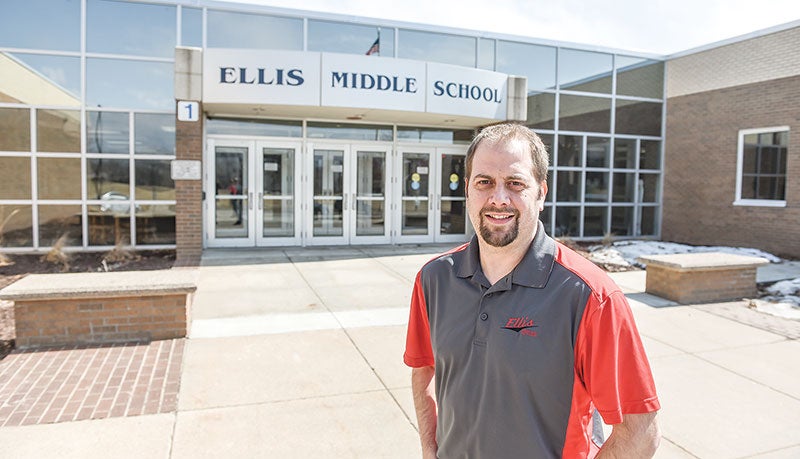Homeless in Austin: Liaison works to identify, help children
Published 8:22 am Thursday, March 29, 2018

- Ellis Middle School Principal is the district’s homeless liason, working with children from unstable homes as well as their families. Eric Johnson/photodesk@austindailyherald.com
In the first year that Jason Senne worked as the district’s homeless liaison, about three children were found to be without a stable home.
Ten years later, 58 have been identified as being homeless, he said.
“But I believe that there could be anywhere from 60-100 or so that we have not identified,” said Senne.
Senne, in addition to being the principal at Ellis Middle School, has served as the homeless liaison for the school district since 2008.
Congress passed the McKinney-Vento Homelessness Assistance Act and it requires every school district to have a liaison, to provide equal access to the same education as someone living in a permanent home.
Senne said while people have notions of who the homeless are – people living in boxes or under bridges — the homeless in Austin are more likely parents who just ran out of money due to hard times.
The majority of those, he added, are “doubling up” in homes of relatives or friends, due to not being able to meet rents, or pay bills.
Once notified by the district, families are asked to fill out a Students in Transition Identification and Needs Assessment Form that further details the living arrangements.
Districts, with the help of federal dollars, can provide free lunch, cost of transportation, clothing, school supplies and tutoring to students, Senne said.
Providing the basics, he said, is not as difficult as getting the word to parents who need that support. Not everyone knows there is help for the child, Senne said.
Counselors and assistance agencies will refer names to the school, and the district’s success coaches have provided a huge boost in reaching parents.
If the families are new immigrants, they may not even know the help is available. However, while new immigrants make up some of the homeless – more likely “doubled up” — number, they are not in the majority, said Senne. Tough economic issues cut across cultural lines. “Our number accurately reflects our Austin demographic,” he said
Some parents, he said, have too much pride to accept help; others, he said, “we just don’t know about.”
Few of the youth are homeless by themselves, he said. There are a few older children, “who don’t like to follow rules” and “couch it” at friends’ homes. However, their parents aren’t necessarily among the homeless population.
Senne said the number of homeless varies from year to year – but not by much, he added. The annual average over the past five years is 51 students.
At preschool through fourth grade, there are 24 homeless this year; there are 10 students each at both I. J. Holton and Ellis schools. At the high school, there are 14.
A University of Minnesota study, released earlier this month, considered the emotional health of homeless youth.
The study from a team of University of Minnesota researchers led by Andrew Barnes, MD, an assistant professor of pediatrics at the University of Minnesota Medical School, used data from the Minnesota Student Survey of over 112,000 eighth through 12th-graders from across the state, rural, urban, suburban, and from every walk of life and every racial and ethnic background.
“There is a false perception that most teens who are homeless are always runaways, when in fact it’s actually much more common for teens who are homeless to be with one or more adult family members,” said Barnes. “I was surprised to see how many youth were homeless with their families in Minnesota – over four percent. That includes not just families with children in living “on the street,” but also those in shelters and also those who were ‘doubled up’ in someone else’s home because they had no place else to live.”
Housing can also be a factor — an item that is a continuing conversation in Austin
“We think that stable housing is key, because our results imply that having a stable home is really foundational for children’s emotional well-being,” said Barnes.
“On the one hand, some factors such as good parent-child relationships and a strong academic orientation do seem to buffer emotional well-being about as well in youth experiencing family homelessness as for those with homes. On the other hand, without a place to call home, we found that some things that normally buffer kids against stress — like having a positive sense of self — just don’t work as well.”
Senne said he would welcome referrals to families who may need help. Those with informaion can contact Senne at 507-460-1500.





